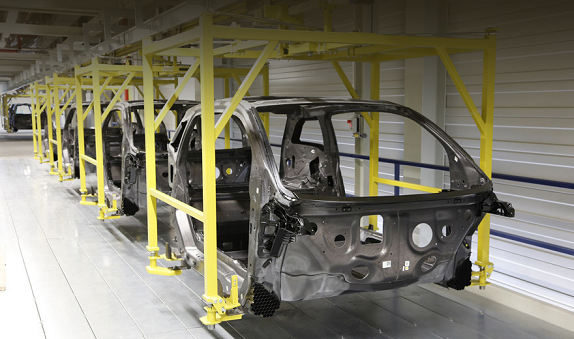Composite materials are reshaping the automotive industry by offering a unique combination of strength, durability, and lightweight properties. As car manufacturers face mounting pressures to improve fuel efficiency, reduce emissions, enhance vehicle safety, and meet sustainability goals, composites have emerged as game-changers in vehicle design and manufacturing. This blog explores how advanced composite materials are revolutionizing automotive engineering and driving innovation across multiple vehicle segments.
Why Composite Materials Matter in Automotive Manufacturing
The quest for lighter vehicles that do not compromise strength and safety is at the heart of modern automotive innovation. Composite materials, such as carbon fiber-reinforced polymers (CFRP) and glass fiber composites, deliver exceptional strength-to-weight ratios. Unlike traditional metals, composites provide rigidity and durability while significantly reducing vehicle mass. This results in enhanced fuel economy, lower greenhouse gas emissions, and improved driving performance.
Moreover, composites are inherently corrosion-resistant, unlike steel and aluminum, ensuring longer-lasting automotive components. Their design flexibility allows complex shapes and integrated functions to be molded efficiently, opening new horizons for innovative vehicle aesthetics and ergonomics. From sleek exterior panels to structural chassis components, composites provide automakers with the freedom to rethink traditional design constraints. According to DataM Intelligence latest report automotive composite materials market is expected to reach US$ 71.01 billion by 2031, growing with a CAGR of 10.75% during the forecast period 2024-2031.
Key Composite Types Driving Automotive Change
Significant types of composite materials are making waves in automotive engineering:
Carbon Fiber Composites: Prized for their extremely high strength and lightweight properties, carbon fiber composites are prominent in luxury, sports, and electric vehicles. They contribute to performance by reducing weight and improving acceleration, handling, and braking while maintaining crash safety.
Glass Fiber Composites: Widely used due to cost-effectiveness and good mechanical properties, glass fiber-reinforced plastics are often found in mid-range vehicles for body panels, bumpers, and structural components, balancing performance and affordability.
Thermoplastic Composites: Exhibiting excellent crash energy absorption, thermoplastics offer better recyclability and manufacturing efficiency. They eliminate painting steps thanks to surface film technology and generate zero solvent emissions during production, aligning with environmental mandates.
Natural Fiber Composites: Emerging as sustainable alternatives, composites using fibers like flax and hemp combined with biodegradable matrices reduce environmental impact without sacrificing mechanical strength. These bio-composites are typically applied in interiors, door panels, and trunk liners.
Transforming Automotive Components and Systems
From structural to cosmetic parts, composite materials are integrated into diverse automotive applications:
Chassis and Body Panels: Composites replace heavier metal parts, offering reduced vehicle weight without compromising rigidity. Honeycomb-structured composites provide superior energy absorption during collisions, elevating passenger safety and meeting crash regulations.
Brake Systems: Composite brake pads and rotors outperform traditional metals in wear resistance and thermal stability. These components improve brake longevity and noise reduction, contributing to enhanced driving comfort.
Powertrain Components: Composite materials, particularly ceramic matrix composites (CMCs), enable high-temperature resistance crucial for engine turbochargers, exhaust manifolds, and transmission housings. Their thermal stability optimizes heat management, boosting powertrain efficiency.
Interiors: Composite materials allow innovative, lightweight designs for seats, dashboards, and door trims. The ability to mold intricate shapes and integrate features—like built-in electronics and acoustic insulation—enhances vehicle comfort and functionality.
Regional Adoption and Industry Trends
In Europe and North America, composites are heavily adopted by luxury and high-performance vehicle manufacturers due to their premium properties. Emerging markets and mainstream automakers increasingly incorporate composites to comply with tightening fuel-efficiency standards and reduce carbon footprints.
Research and development centers across Germany, France, and the U.K. focus on pushing composite fabrication technologies for mass production scalability. Moreover, manufacturers invest in sustainable composites and circular economy approaches, including recycling composite waste and using natural fibers.
Overcoming Challenges in Composite Integration
While composites offer many advantages, initial cost concerns and production complexities remain hurdles for broad adoption, especially in high-volume models. The automotive industry traditionally invests heavily in metal stamping facilities, causing a cautious approach to switching to composite manufacturing.
However, advancements in automation, including rapid tape laying and additive manufacturing, are reducing production times and costs. Combining simulation tools for stress analysis and manufacturing optimization enables faster design-to-production cycles. These developments are gradually overcoming traditional barriers, making composites more viable for mainstream vehicle production.
The Future of Composites in Automobiles
Collaborative innovation among material scientists, automotive engineers, and manufacturers will continue unlocking the full potential of composites. By fine-tuning fiber orientations, matrix systems, and hybrid composite designs, automakers can tailor performance characteristics for specific platforms, whether for electric vehicles, autonomous cars, or commercial trucks.
The growing demand for lightweight, durable, and environmentally friendly vehicles makes composites a cornerstone of future automotive design. As legislation pushes for carbon-neutral manufacturing and operability, composites will play a pivotal role in ensuring vehicles meet these exigent standards while delivering enhanced safety and driving experience.
Conclusion
Composite materials are at the forefront of transforming the automotive industry. Their unmatched strength-to-weight ratio, corrosion resistance, and design flexibility are enabling manufacturers to build safer, lighter, and more efficient vehicles. Technological advances in composite fabrication and increased sustainability focus will broaden their adoption across all vehicle segments. As composites continue to redefine what is possible in automotive engineering, they promise a future where innovation meets environmental responsibility and superior performance. The automotive sector’s embrace of composite materials marks a decisive move towards smarter, greener, and more stylish vehicles powering tomorrow’s roads.


















